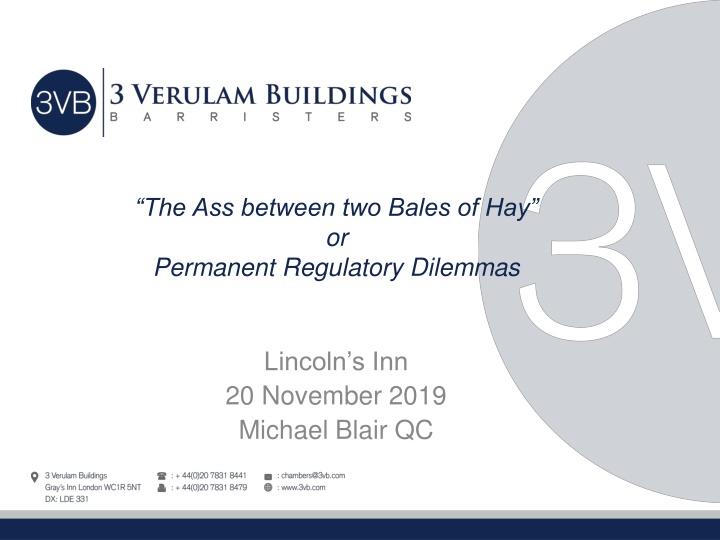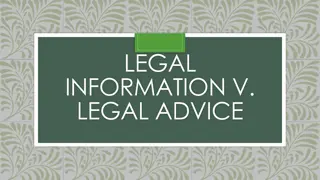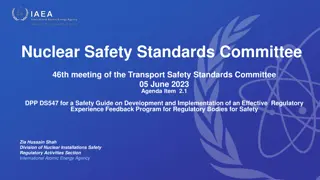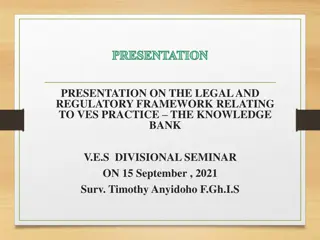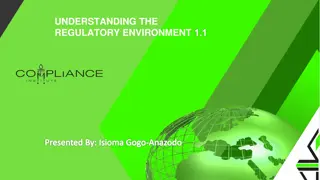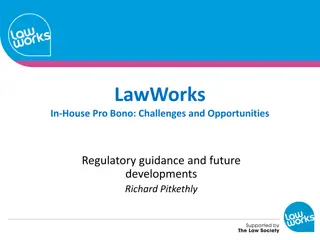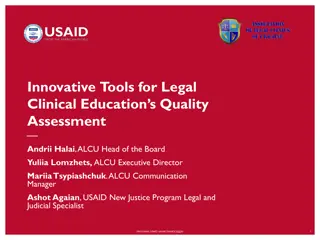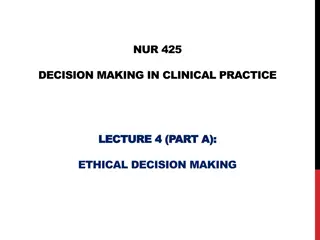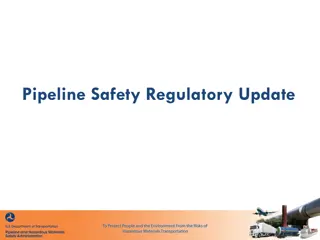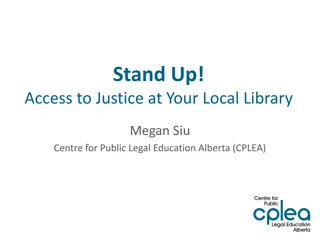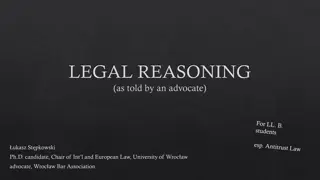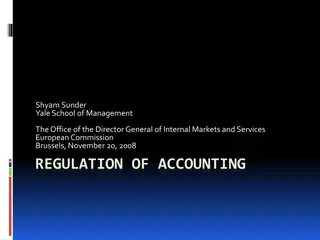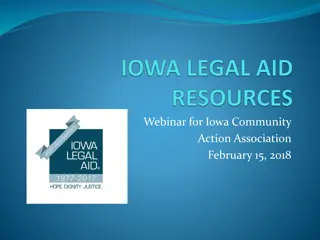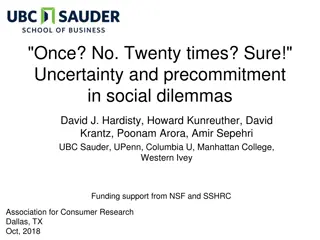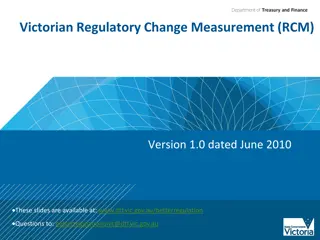Analyzing Regulatory Dilemmas in Legal Practice
Exploring the challenges of regulatory scope, structure, style, and requirements within the legal profession, with a focus on the Bar's evolving regulatory landscape and considerations for balancing statutory regulation and self-regulation.
Download Presentation

Please find below an Image/Link to download the presentation.
The content on the website is provided AS IS for your information and personal use only. It may not be sold, licensed, or shared on other websites without obtaining consent from the author.If you encounter any issues during the download, it is possible that the publisher has removed the file from their server.
You are allowed to download the files provided on this website for personal or commercial use, subject to the condition that they are used lawfully. All files are the property of their respective owners.
The content on the website is provided AS IS for your information and personal use only. It may not be sold, licensed, or shared on other websites without obtaining consent from the author.
E N D
Presentation Transcript
The Ass between two Bales of Hay or Permanent Regulatory Dilemmas Lincoln s Inn 20 November 2019 Michael Blair QC
My five regulatory dilemmas 1. Regulatory scope 2. Regulatory structure 3. Style of regulation 4. Regulatory requirements (principle or prescription) 5. Regulatory priority
A little more detail 1. Regulatory Scope The issue, for any particular sector activity or product, is whether statutory regulation is needed, or whether market forces (including peer-pressure/self-regulation) are enough to serve the public interest. NB: for barristers, statutory regulation first appeared in 2008, with self-regulation beneath it. Advocates in Scotland are still free from statutory regulation.
A little more detail 2. Regulatory structure. Here the key issue for the donkey is whether to go for the advantage of (a) unification, in order to secure simplicity and potentially greater coherence; or (b) diversification so as to reflect a diverse landscape and to secure potentially greater specialisation. NB: for the Bar, the current structure reflects (b) and we are justifiably very proud of it. But some outside observers see benefits to the public in (a).
A little more detail 3. Style of regulation Here the key issue for the donkey is between confrontation and a comradely approach. Is the primary emphasis to be on securing compliance through fear, enforcement and penalties, or through encouragement and support? NB for the Bar, this issue has not been of major importance hitherto; certainly to a much lesser degree than in financial services.
A little more detail 4. Regulatory requirements. Should the actual rule-books be based (a) on prescriptive detail, with precise drafting making it easy to know if there has been compliance or a breach; or (b) on principles which are much looser, and leave room, alongside uncertainty, for the application of notions of morality and fairness. This is not yet a major issue for the Bar, but the point is now being considered in the Bar Standards Board: so watch this space.
A little more detail 5.Regulatory priority. Should the system attempt to cover the entire field of consumer risk, or cover only the areas where regulation can assist in a cost-effective way? And how best are finite resources to be deployed against uncertain future risks? NB for the Bar, Regulation is imposed (a) by statute on the basis of reserved legal activities and (b) at front line on the basis of title : so (a) may mean that consumer risks are left out, and (b) may mean that things are regulated that do not require it.
Conclusion My five dilemmas were scope; structure, style (friend or enforcer), requirements (principle or prescription) and breadth of responsibility. They all have varied in the past, but the modern trend is towards more regulation. However increased maturity to restrain some of the weight of it may be foreseeable provided that the endgame of Brexit does not get in the way. So, in some ways, perhaps life in the middle is not so bad after all. And more of these dilemmas seem relevant to the future of the Bar than I had supposed when I started to prepare for this talk.
So, there are ways in which I am happy in the middle after all!
